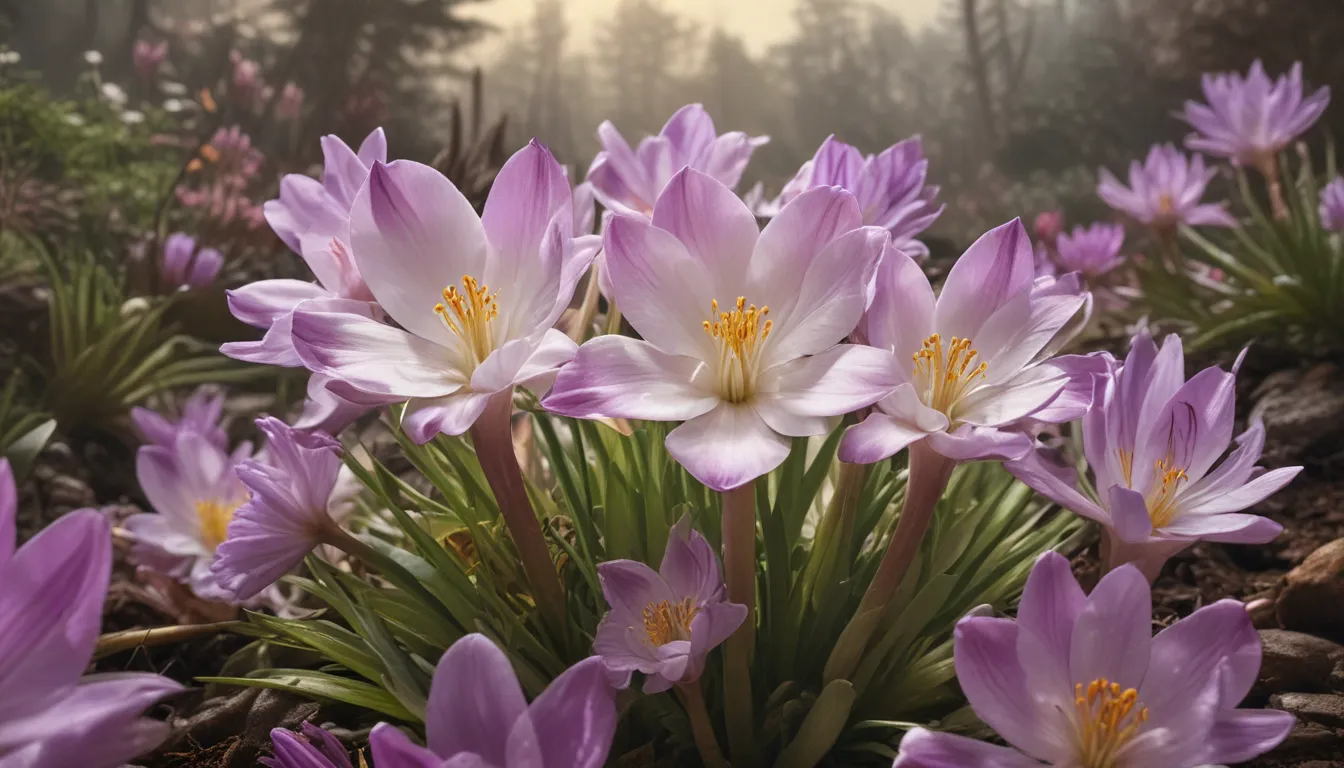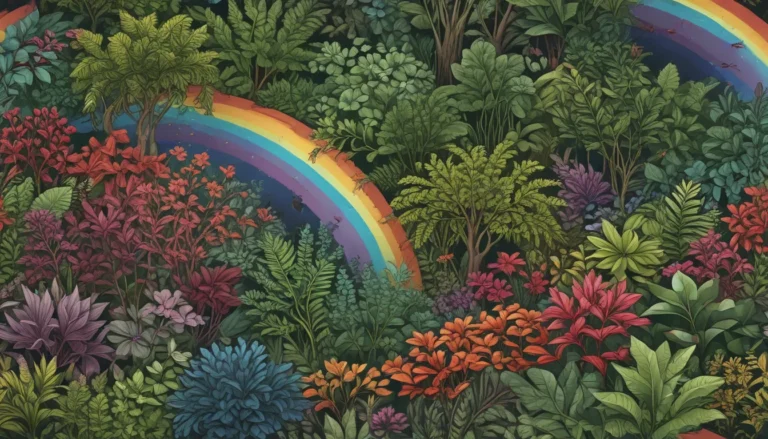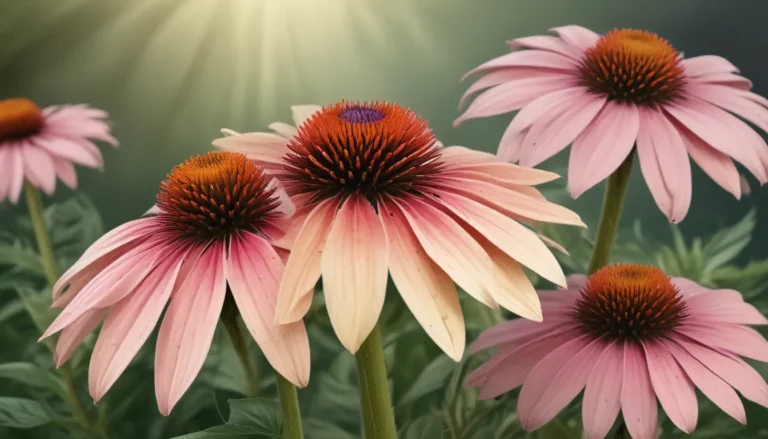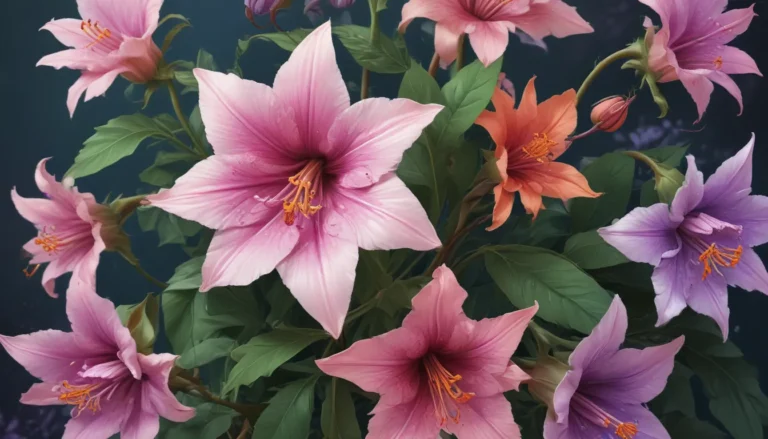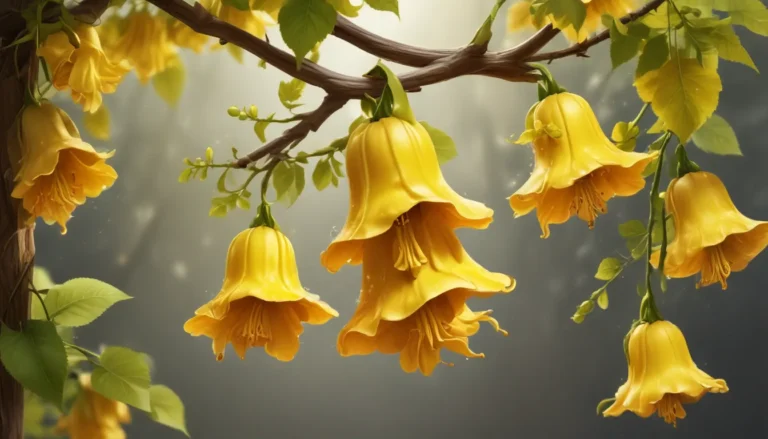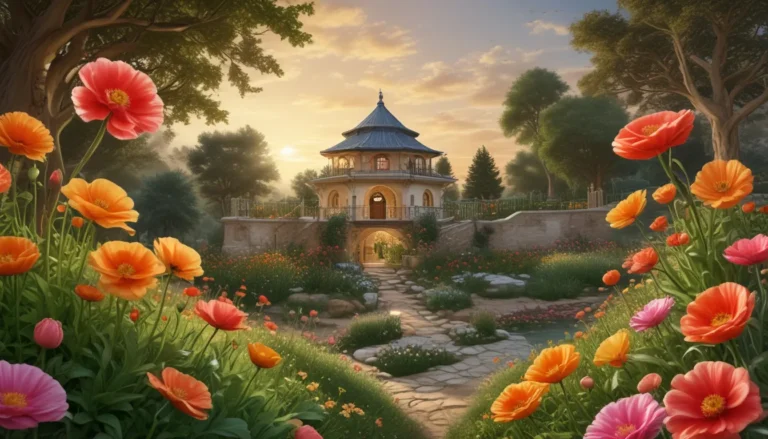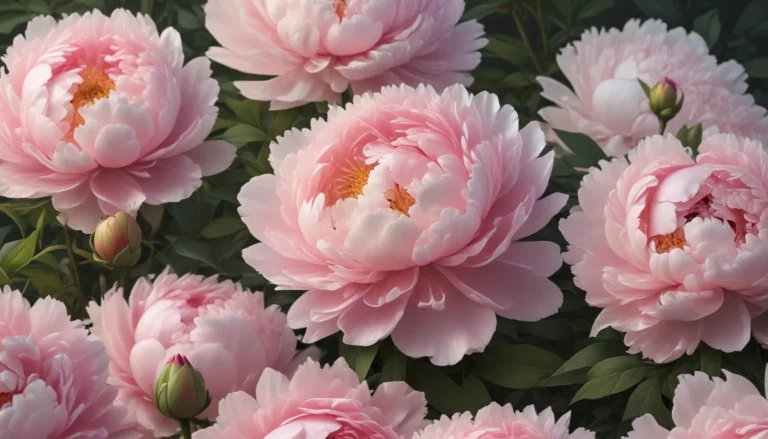The pictures we use in our articles might not show exactly what the words say. We choose these pictures to make you interested in reading more. The pictures work together with the words but don’t take their place. The words still tell you the important facts.
Colchicum, also known as autumn crocus or meadow saffron, is a captivating plant that has fascinated generations with its vibrant blooms and remarkable properties. In this article, we will embark on a journey to discover 16 unbelievable facts about Colchicum that will leave you in awe of this unique plant. From its medicinal uses to its mysterious growth patterns, get ready to delve into the world of Colchicum and uncover the fascinating secrets it holds. So, buckle up and prepare to be amazed by the wonders of Colchicum!
The Origin and Diversity of Colchicum
Colchicum, commonly known as the autumn crocus, is a stunning flowering plant native to Europe, Asia, and North Africa. With over 90 different species, Colchicum plants have graced gardens and landscapes for centuries. Each species of Colchicum boasts unique characteristics, from delicate pale pink flowers to vibrant deep purple blooms, offering a wide range of options for gardeners and plant enthusiasts.
The Magical Compound: Colchicine
One of the most fascinating aspects of Colchicum plants is the presence of colchicine, a natural compound found in its bulbs and seeds. Colchicine has amazed scientists with its powerful medicinal properties and has been used in the treatment of gout, cancer, and even as an ingredient in plant breeding. This compound adds to the mystique and allure of Colchicum, showcasing its versatility and significance in the botanical world.
The Unique Growth Pattern of Colchicum
One unbelievable fact about Colchicum is its ability to defy the conventional order of growth. While most plants grow from the ground up, Colchicum plants have the unique quality of producing flowers before leaves. This extraordinary trait is like rewinding time and witnessing nature's magic unfold right before your eyes, adding to the allure and mystery of this fascinating plant.
The Deadly Beauty of Colchicum
Beneath the enchanting beauty of Colchicum lies a dangerous secret. All parts of the plant, including the flowers, leaves, and bulbs, contain toxic compounds. It is crucial to handle Colchicum plants with caution and appreciate their beauty from a safe distance to avoid any potential harm. This juxtaposition of beauty and danger further enhances the mystique and intrigue surrounding Colchicum.
The Resilience and Adaptability of Colchicum
Colchicum plants exhibit a remarkable ability to withstand harsh conditions and adapt to various environments. From sandy soils to woodland areas, Colchicum thrives in adverse conditions, showcasing its resilience and survival skills. This adaptability makes Colchicum a valuable addition to any garden, adding a touch of beauty and strength to the landscape.
The Symbolism and Legends of Colchicum
Throughout history, Colchicum plants have inspired myths and legends, adding a layer of symbolism to their enchanting beauty. In Greek mythology, Colchicum is associated with the story of Colchis, a region known for its magical herbs. The plant is believed to possess mystical powers, further adding to its allure and mystique in various cultures and traditions.
The Therapeutic and Medicinal Uses of Colchicum
Colchicum has been used in traditional medicine for centuries, particularly for its anti-inflammatory properties. However, caution must be exercised as some parts of the plant are highly toxic if ingested. The medicinal uses of Colchicum highlight its versatility and potential in treating various ailments, showcasing its importance beyond its aesthetic appeal.
The Journey from Colchicum to Saffron
Interestingly, Colchicum plays a significant role in the production of saffron, the world's most expensive spice. The plant Crocus sativus, which produces saffron, is closely related to Colchicum and is sometimes mistakenly referred to as the autumn crocus. This connection between Colchicum and saffron adds a layer of historical and cultural significance to the plant, highlighting its diverse uses and associations.
The Captivating Blooms and Pollinators of Colchicum
The charming flowers of Colchicum serve as a delightful treat for pollinators such as bees and butterflies. These nectar-rich blooms attract pollinators, aiding in the plant's reproduction and adding to the vibrancy and liveliness of the garden. The interaction between Colchicum and pollinators underscores the interconnectedness and beauty of the natural world, showcasing the importance of these relationships in sustaining ecosystems.
Preserving the Legacy of Colchicum
As we uncover the astonishing world of Colchicum plants, it is essential to ensure their preservation for future generations to appreciate. Through cultivation, conservation efforts, and raising awareness about the plant's unique characteristics and importance, we can contribute to safeguarding these incredible botanical wonders. By appreciating and protecting Colchicum, we can ensure that its beauty and significance endure for years to come, enriching the botanical landscape and inspiring future generations.
Conclusion
In conclusion, Colchicum is a fascinating plant with a rich history, remarkable properties, and a captivating allure that continues to mesmerize plant enthusiasts and researchers alike. From its vibrant blooms to its medicinal uses, Colchicum holds a world of wonders waiting to be explored and appreciated. As we embrace the beauty and mystique of Colchicum, let us also recognize the importance of preserving and protecting these extraordinary plants for the benefit of future generations. Discover the enchanting world of Colchicum and immerse yourself in the beauty, symbolism, and magic of this unique plant.
FAQs
Q: What is Colchicum?
A: Colchicum, also known as autumn crocus or meadow saffron, is a flowering plant native to Europe, Asia, and North Africa.
Q: When does Colchicum bloom?
A: Colchicum typically blooms in the autumn, adding a burst of color to gardens and landscapes.
Q: Does Colchicum have any medicinal properties?
A: Yes, Colchicum has been used in traditional medicine for its anti-inflammatory properties, but caution must be exercised due to its toxicity.
Q: Can Colchicum withstand adverse conditions?
A: Yes, Colchicum is resilient and adaptable, thriving in various environments and conditions.
Q: What is the significance of Colchicum in culture and folklore?
A: Colchicum has inspired myths, legends, and symbolism in various cultures throughout history, adding to its enchanting allure and mystery.
Let the world of Colchicum inspire you with its beauty, resilience, and enchanting tales, as you embark on a journey of discovery and appreciation for these unique plants. Delve into the wonders of Colchicum and uncover the magic and mystery that await you in the captivating realm of nature's artistry.
